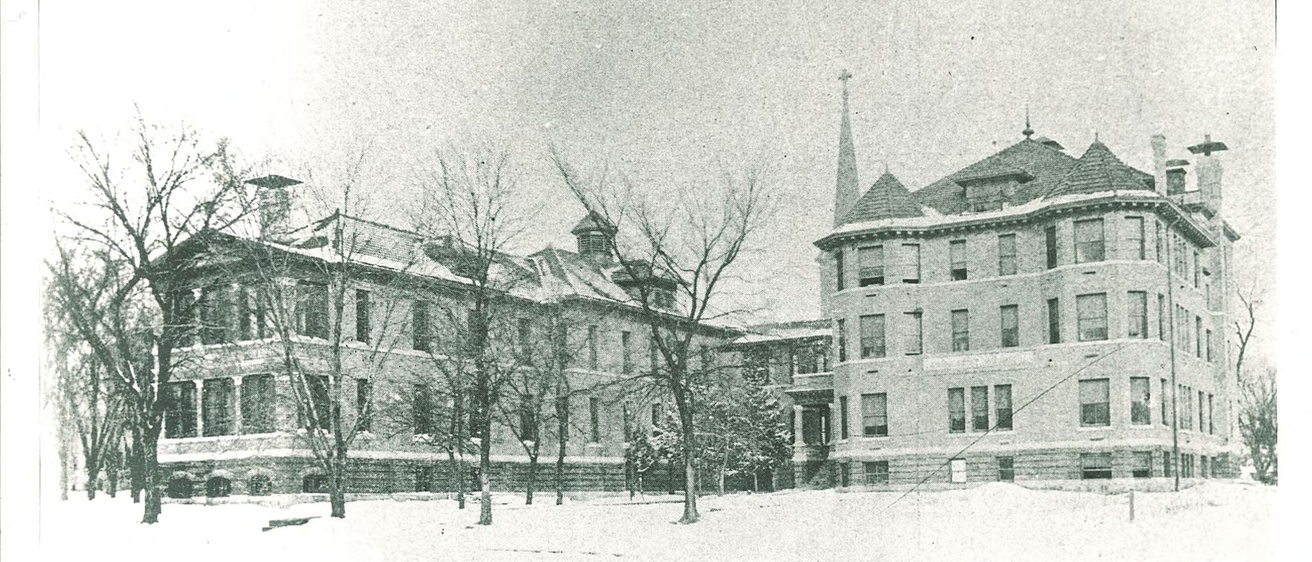Main navigation
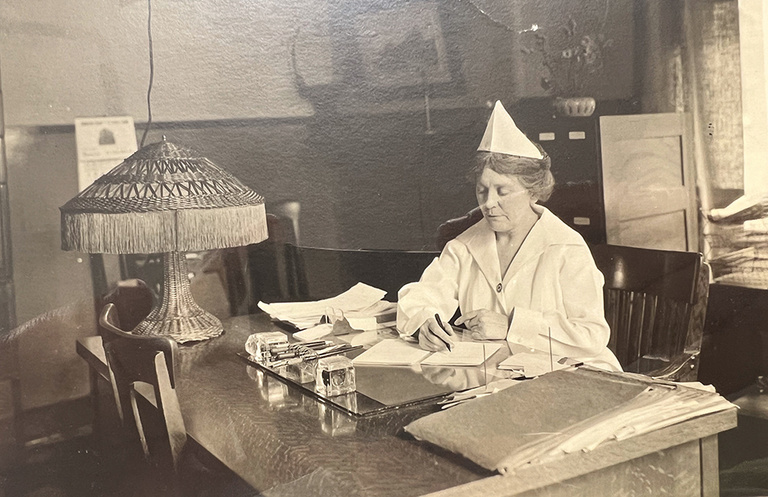
The first half of the 20th century was a time of exploration, growth, and development at the Training School for Nurses, as the College of Nursing was initially known. The program began in 1898, when the first class of five moved into the State University of Iowa’s (SUI) newly opened University Hospital on the east side of the Iowa River and started their two-year course of training. The training program was soon lengthened to three years, and enrollment grew rapidly, reaching forty-six by 1910. At the end of their studies, students received the Certificate of Graduate Nurse (GN).
Overseen and taught by the College of Medicine, nursing education reflected the priorities of physicians at the time, and practical experience working on the hospital wards was the primary focus. Over the years, the didactic requirements were slowly adjusted, and in 1919, a five-year program to complete a Bachelor of Science and a GN certificate was added.
Planning for a new hospital campus on the west side of the river began in the mid-1910s and included a children’s hospital, psychiatric hospital, medical laboratory building, and nurse’s dormitory. The Children’s Hospital opened in 1919, Westlawn nurse’s dormitory opened in 1921, and the new general hospital and lab followed in 1928.
1919 graduate Marcella McInnery’s “most rugged assignment as a student was to care for nine babies with chicken pox. The isolation area then was in two old houses northeast of East Hall. … Miss McInnerny had to stay in one of the houses continuously for a number of weeks to care for the babies, with food and supplies being sent in. She remembers her relief when a UI student got chicken pox and joined her patients—she at least had someone to talk to.”
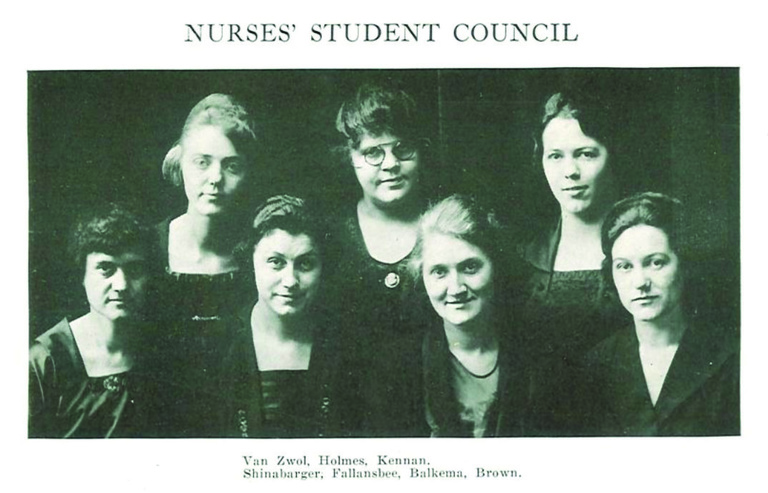
The austerity of the Great Depression, marked at Iowa by cuts in state appropriations for indigent care and the university, the decline of private duty nursing, and a saturated market for nurses led to changes in the nursing profession and decline in nursing student enrollment during the 1930s.
However, with the onset of a new decade and the start of World War II, the market for nurses changed and national calls were made for nursing schools to increase enrollment. The School of Nursing, as it was now known, heeded the call and welcomed 143 first-year students in 1941. The national Cadet Nurse Corps (CNC) program, authorized and funded by the federal government in 1943, further expanded enrollment. More than 400 CNC students enrolled at Iowa from 1943-45. Their presence paid for expansion—via 60 percent financing by Federal Works Administration—of Westlawn in 1945.
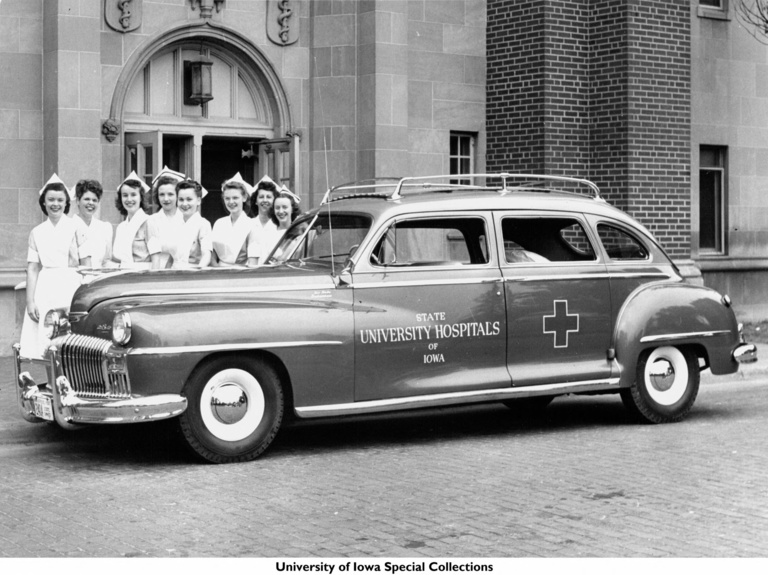
Throughout the 1930s and 40s, the School of Nursing maintained the three-year GN certificate program and five-year Bachelor of Science and GN certificate program. Due to changes in the College of Liberal Arts and Sciences, the bachelor’s degree/certificate program increased to six years in 1945. Enrollment in that program subsequently dropped, and the idea of a baccalaureate degree in nursing took hold. State University of Iowa president Virgil Hancher supported the idea, recognizing that a baccalaureate program would make the nursing education more appealing statewide.
In 1948, with the support of the Iowa State Nurses Association and the SUI Nurses Alumni Association, Hancher presented a proposal for the collegiate program to the State Board of Education, and the Board of Regents appointed Amy Frances Brown as the first nursing faculty to hold the rank of assistant professor.
In December 1948, amidst these changes, the School of Nursing celebrated its Golden Jubilee with a banquet at the Iowa Memorial Union.
Back in the 1920s, a [nursing student] locked herself in her room at Westlawn one evening and painted the walls a bright color. Several alumnae now retired and living in Iowa City can’t recall what color she used, but they have no trouble remembering the color she painted over.
Battleship gray covered all walls and woodwork in the nurses’ dormitory and in the old University Hospital in what is now East Hall. The dark paint was used because it was supposedly the most economical color, both to apply and maintain.
The rebellious coed was the late Carmelita Calderwood Hearst, who became
1896-1897
University catalog carries the first announcement of “The Training School for Nurses.” The two-year course would provide “practical work in the wards, classes, and lectures and a complete course in involved cookery.”
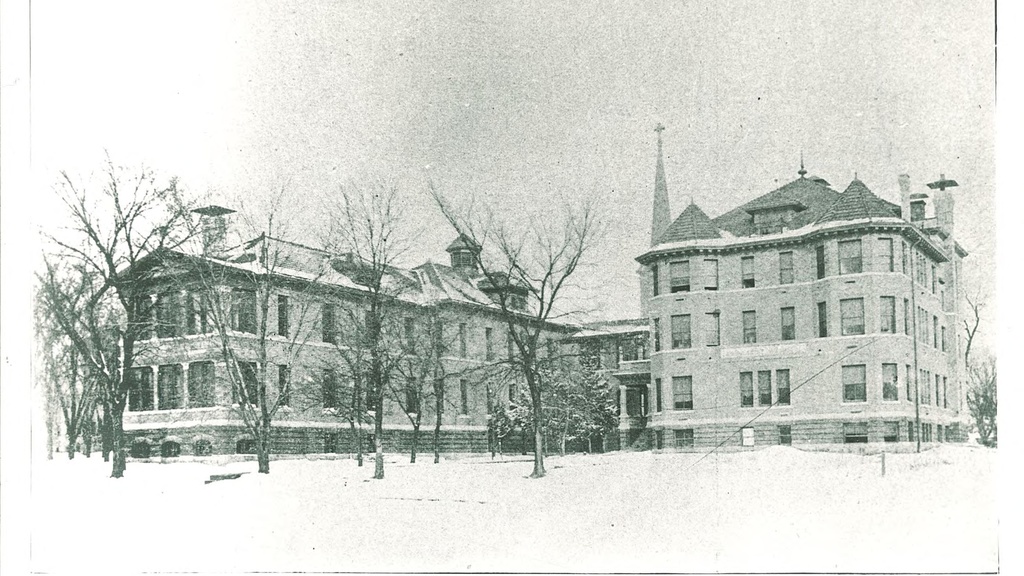
1898
The new hospital opens in January and five students begin at the Training School for Nurses. Students live in the hospital until 1906.
1900
The first five nurses complete their training and receive the Certificate of Graduate Nurse (GN)
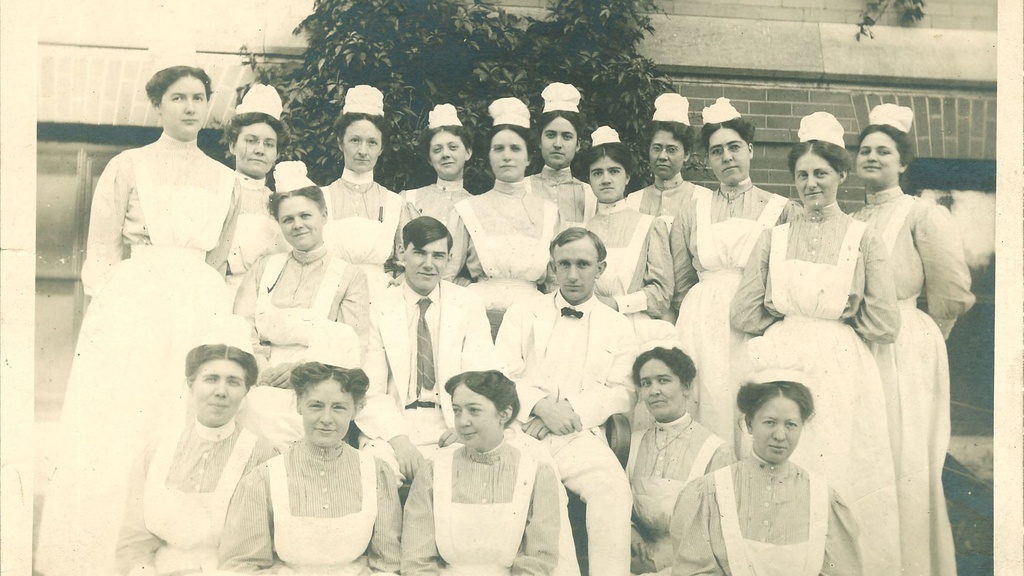
1906
Increasing enrollment makes it necessary to rent houses near the hospital for the students.
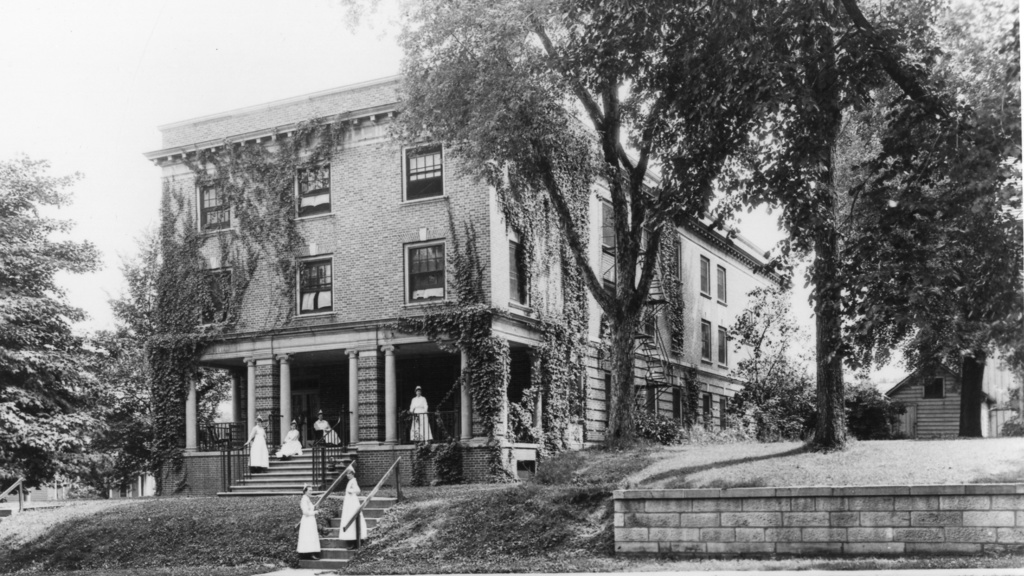
1915
Eastlawn dormitory for nurses is completed.
“A new home has just been completed for the nurses; this is of three stories and a basement. The main floor possesses roomy parlors, tastefully furnished in harmonizing color schemes. The building accommodates 90 nurses, whose comfort has been insured by means of roomy closets, numerous lavatories, shower-baths, and mirror-doors fitted to the closets.” —Hawkeye Yearbook, 1916
1919
Five-year combined liberal arts and nursing program begins. Graduates receive a Bachelor of Science and a Certificate of Graduate Nurse.
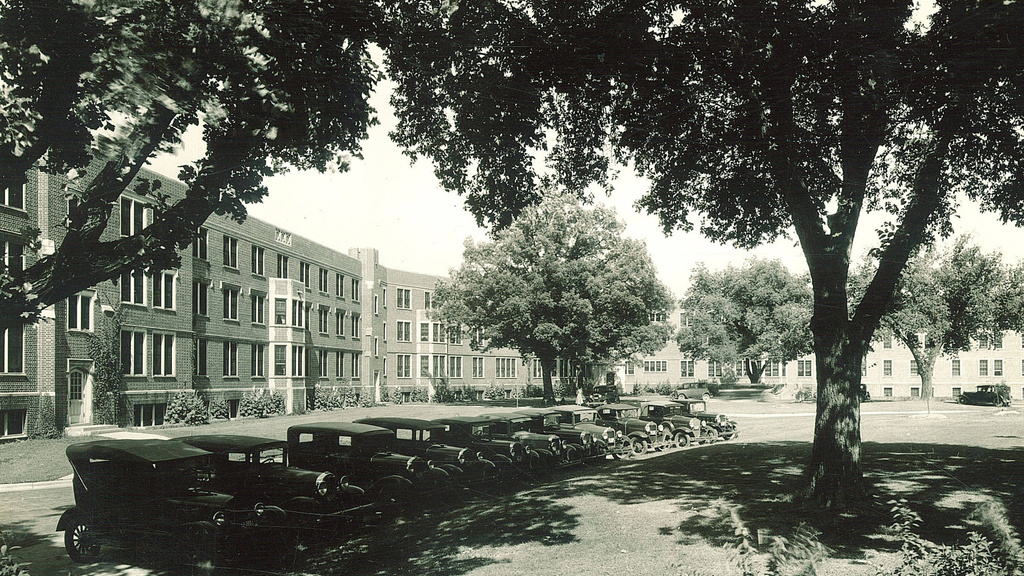
1919-1921
Children’s Hospital (1919), Westlawn dormitory for nurses (1921), and Psychopathic Hospital (1921) are built on the west side of the Iowa River as the University expands.
“The new home for nurses on the West Campus was opened this year. It is well finished and is in every way a splendid home for the large number of women it accommodates.” —Hawkeye Yearbook, 1923
1929
Gamma Chapter of Sigma Theta Tau Honor Society of Nursing established at Iowa.
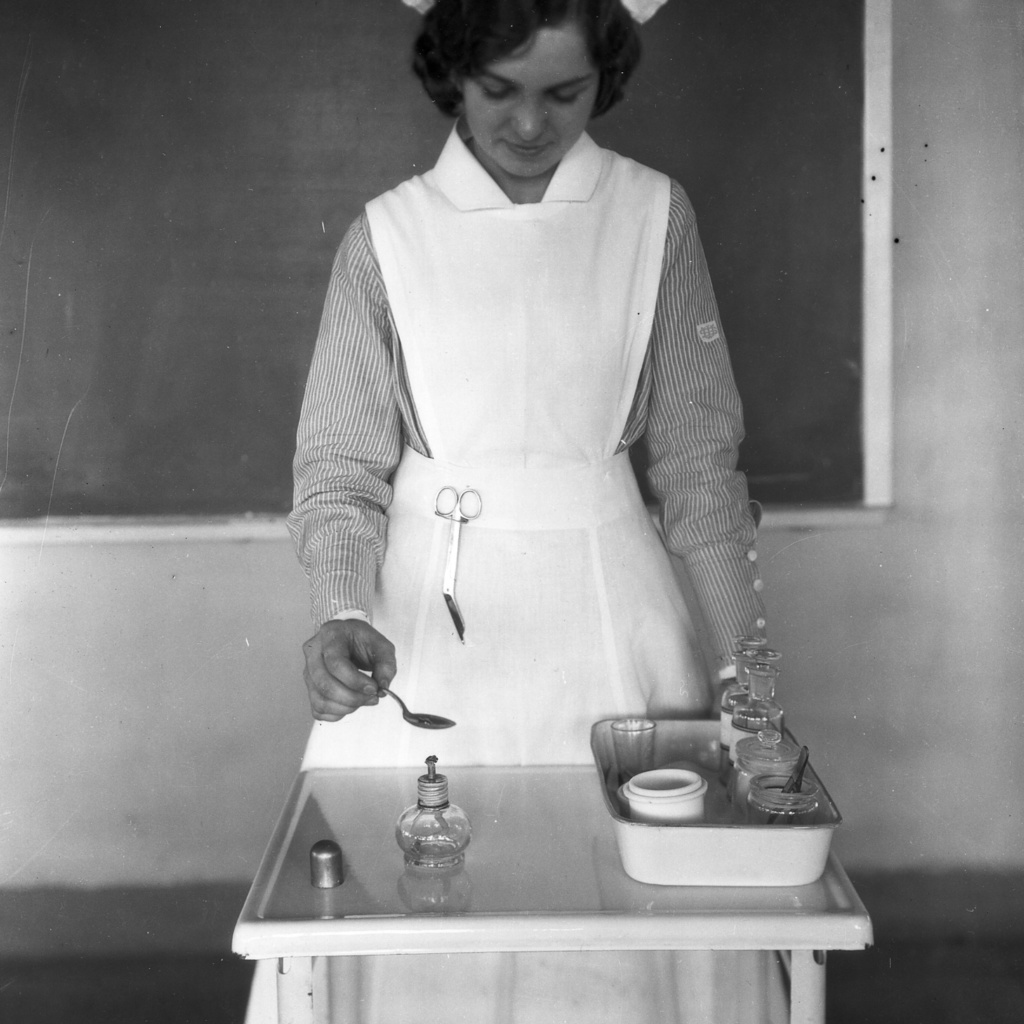
1931
Nursing student hospital work is limited to eight hours per day.

1943
The Cadet Nurse Corps program begins.
1945
Addition to Westlawn is completed, adding space for 121 more nursing students.
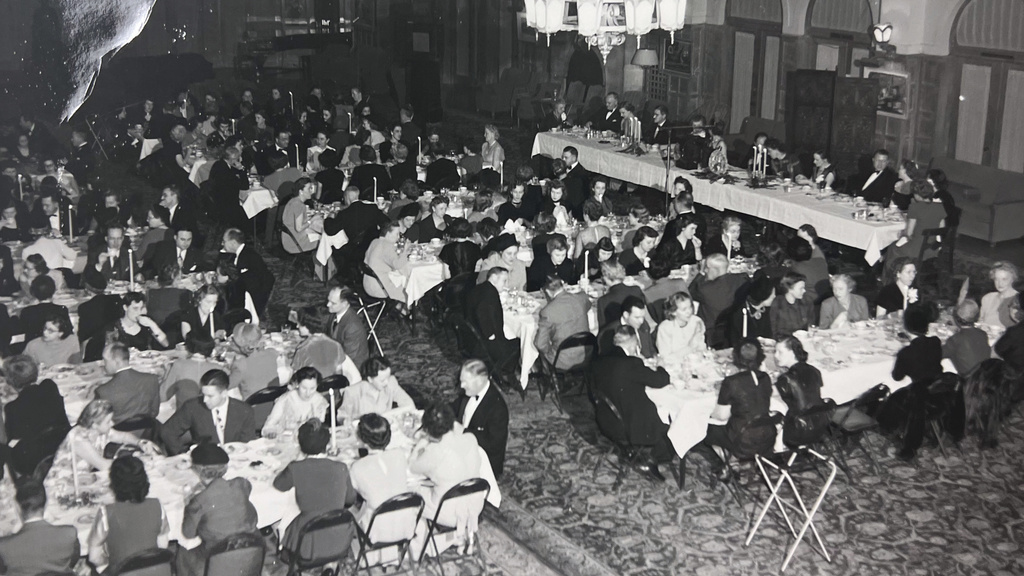
1948
The school’s Golden Jubilee is celebrated in December.
Mother was a nursing student. She shared many memories of her days in Iowa City, from moving patients from the hospital to the porches overlooking the stadium so they could watch the Saturday afternoon football games with Nile Kennick [sic] as the star player to talking about dancing to the music of Louis Armstrong. Mother was the envy of all her classmates when at graduation exercises she walked with Nile Kennick. She recalled how he commented on how nice the nurses looked in their nursing caps and capes.
